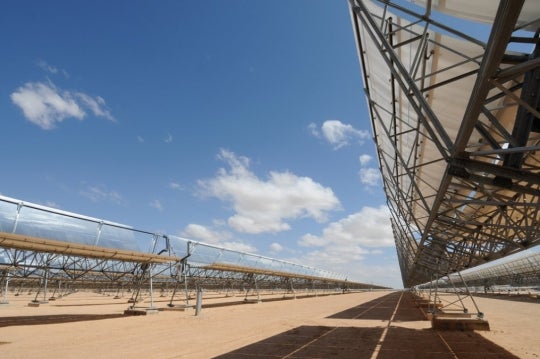
I’ve been hearing from business leaders over the past few months about the impact climate change could have on their industries and the goods and services we all rely on. They might not talk much about it publicly, but they are very aware of the risks a warming planet poses for their supply chains, factories and work force.
Loss of water supply is one risk that looms large, not only for beverage companies but also for energy producers, for industries with equipment to cool, and for the entire food supply chain when farmers contend with less predictable rainfall or none at all. When water supplies get low or temperatures soar, that also affects the health and productivity of the work force. The effects ripple up the supply chain.
What’s exciting is how business leaders are finding opportunities despite challenging conditions.
SAP, the business software company, turned an exploration into reducing its own energy consumption, related costs and environmental impact into new systems that helps its clients run similar assessments to cut costs.
Alstom, a multinational energy company, has invested in innovation to help their industries adapt and lower emissions. It is working on carbon capture and storage technologies designed to prevent the release of greenhouse gases into the atmosphere. Enel, GDF Suez, and other energy leaders are investing in low-carbon, renewable energy to meet their clients’ needs today and into the future.
These and other companies are being increasing vocal in their call for consistent policies that can support innovation for a cleaner future. They have joined hundreds of others ahead of the UN Secretary-General’s Climate Leadership Summit in declaring their support for a price on carbon.
This is important. Governments cannot solve the climate crisis alone. We need private sector investment and innovation – it’s what increases the efficiency of old technology and leapfrogs into new, better, cleaner options.
Corporations also need governments to be supportive on this front. A price on carbon provides the policy certainty business leaders need to revalue efficiency and shift their priorities to cleaner growth, as Microsoft found when it created a “shadow” price on carbon that mimics carbon pricing.
Microsoft’s internal “carbon fee” is helping the company’s business units focus on energy efficiency, saving money. More than 150 major corporations today use internal carbon pricing in their decision making to help provide a clearer picture of their risks and to help find opportunities.
Companies tell us they are looking for policy consistency and flexibility in how they reduce emissions. Carbon pricing policies allow them to innovate and find the most successful solutions for their industries.
Fundamentally, carbon pricing shifts the cost of the damage caused by emissions to their sources, costs that today fall to everyone in the form of public health costs and damage from storms and temperature extremes. This shift opens a door to cleaner, healthier alternatives.
Climate change is a global challenge on a scale that humanity has never seen. It affects all of us. We all have opportunities – and a responsibility to future generations – to do something about it. It’s exciting to see businesses taking the lead.
This post originally appeared on LinkedIn.


Join the Conversation